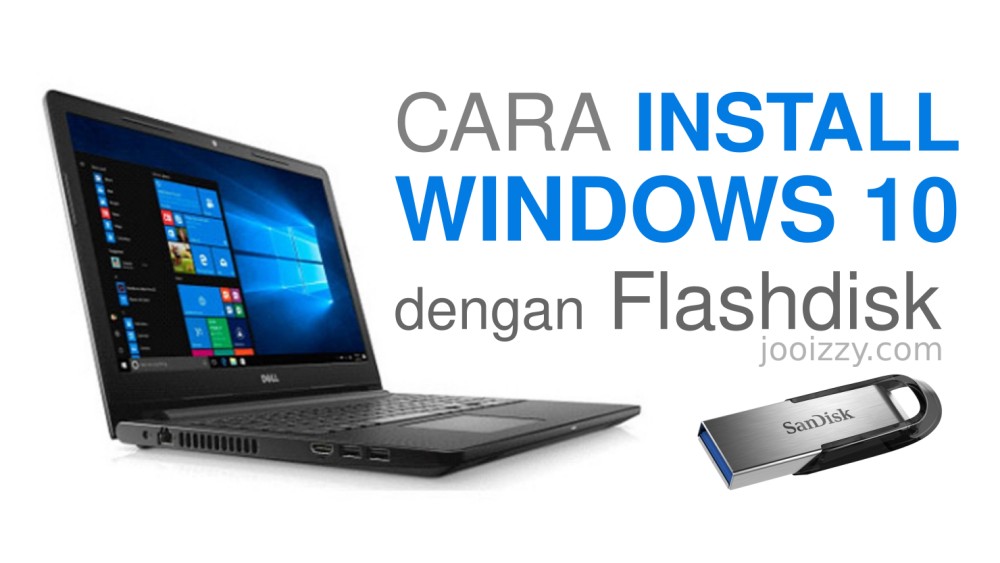Installing Windows 10 with a flash drive is a convenient and practical method that helps users begin using their computer in no time. Flash drives and USB storage devices are portable and reusable, making them ideal tools for installing operating systems. In this article, we will guide you step-by-step on how to install Windows 10 using a flash drive, accompanied by helpful images to ensure a successful installation process.
 Step-by-Step Guide: Installing Windows 10 with a Flash Drive
Step-by-Step Guide: Installing Windows 10 with a Flash Drive
Before you start, you’ll need a few things: a flash drive with at least 8GB of capacity, a Windows 10 ISO file, and a computer where you’ll install Windows 10. Here are the steps:
- Insert the flash drive into your computer and make sure it’s recognized by your system.
- Download the Windows 10 ISO file from the official Microsoft website. Make sure you choose the correct version and architecture (32-bit or 64-bit) for your computer.
- Once the ISO file is downloaded, right-click on it and select “Mount.”
- Open the mounted ISO file and copy all its contents to the flash drive. This can be done by pressing “Ctrl+A” to select all the folders and files, and then “Ctrl+C” to copy them.
- Go to the Start menu and select “Settings,” then “Update & Security,” and then “Recovery.”
- Select “Restart now” under the “Advanced startup” section.
- Once your computer restarts, select “Use a device.”
- Choose your flash drive from the list of available devices.
- Follow the on-screen instructions to install Windows 10.
 Creating a Bootable Flash Drive Using the Command Prompt
Creating a Bootable Flash Drive Using the Command Prompt
In some cases, copying the contents of an ISO file to a flash drive may not be sufficient to create a bootable drive. In these instances, you can make a bootable flash drive by using the Command Prompt. Here’s how to do it:
- Connect your flash drive to your computer and make sure it’s recognized.
- Open the Command Prompt as an administrator. You can do this by searching for “Command Prompt” in the Start menu, right-clicking it, and selecting “Run as administrator.”
- Type “diskpart” and press Enter to open the DiskPart utility.
- Type “list disk” to show all the disks and drives connected to your computer. Note the number assigned to your flash drive.
- Type “select disk
” to select your flash drive. Replace with the number assigned to your flash drive. - Type “clean” to erase all data on your flash drive.
- Type “create partition primary” to create a new primary partition on your drive.
- Type “select partition 1” to select the newly created partition.
- Type “format fs=ntfs quick” to format the partition in NTFS format quickly.
- Type “active” to set the partition as active.
- Type “exit” to exit the DiskPart utility.
- Type “d:” and press Enter. This is the drive letter assigned to your flash drive. Replace “d” with the letter assigned to your flash drive on your system if yours is different.
- Type “cd boot” and press Enter to navigate to the boot directory.
- Type “bootsect.exe /nt60
:” and press Enter. This installs the boot sector on the flash drive. Replace with the letter assigned to your flash drive. - Type “exit” to close the Command Prompt.
- Copy the contents of the Windows 10 ISO file to the flash drive, as outlined in the previous section of this article.
Frequently Asked Questions (FAQ)
Q: Do I need to purchase a new copy of Windows 10 to upgrade my computer’s operating system?
A: If your computer already has a valid license for Windows 7, Windows 8, or Windows 8.1, you may be eligible for a free upgrade to Windows 10. You can check if your computer is eligible for this upgrade on the Microsoft website.
Q: How can I backup my important files before installing Windows 10?
A: To backup your important files before installing Windows 10, you have a few options. One is to use an external hard drive to copy your files. Another option is to use cloud storage services, such as Google Drive or Dropbox, to store your files online. You can also use backup software, such as Windows Backup and Restore, to create a system image of your computer. Whichever method you choose, it’s important to ensure that your files are backed up and stored safely before proceeding with the installation process.
Windows 10 Installation via USB Video Tutorial
If you prefer watching a video tutorial, we have included a helpful step-by-step guide on how to install Windows 10 via USB in the video below.
Installing Windows 10 via USB is a straightforward process that anyone with basic computer skills can accomplish. By following our step-by-step guide and helpful images, you’ll have a fresh copy of Windows 10 in no time. Remember to backup your important files, ensure you have the correct Windows 10 ISO file, and make sure your flash drive is working properly before starting the installation process.
 Step-by-Step Guide: Installing Windows 10 with a Flash Drive
Step-by-Step Guide: Installing Windows 10 with a Flash Drive Creating a Bootable Flash Drive Using the Command Prompt
Creating a Bootable Flash Drive Using the Command Prompt